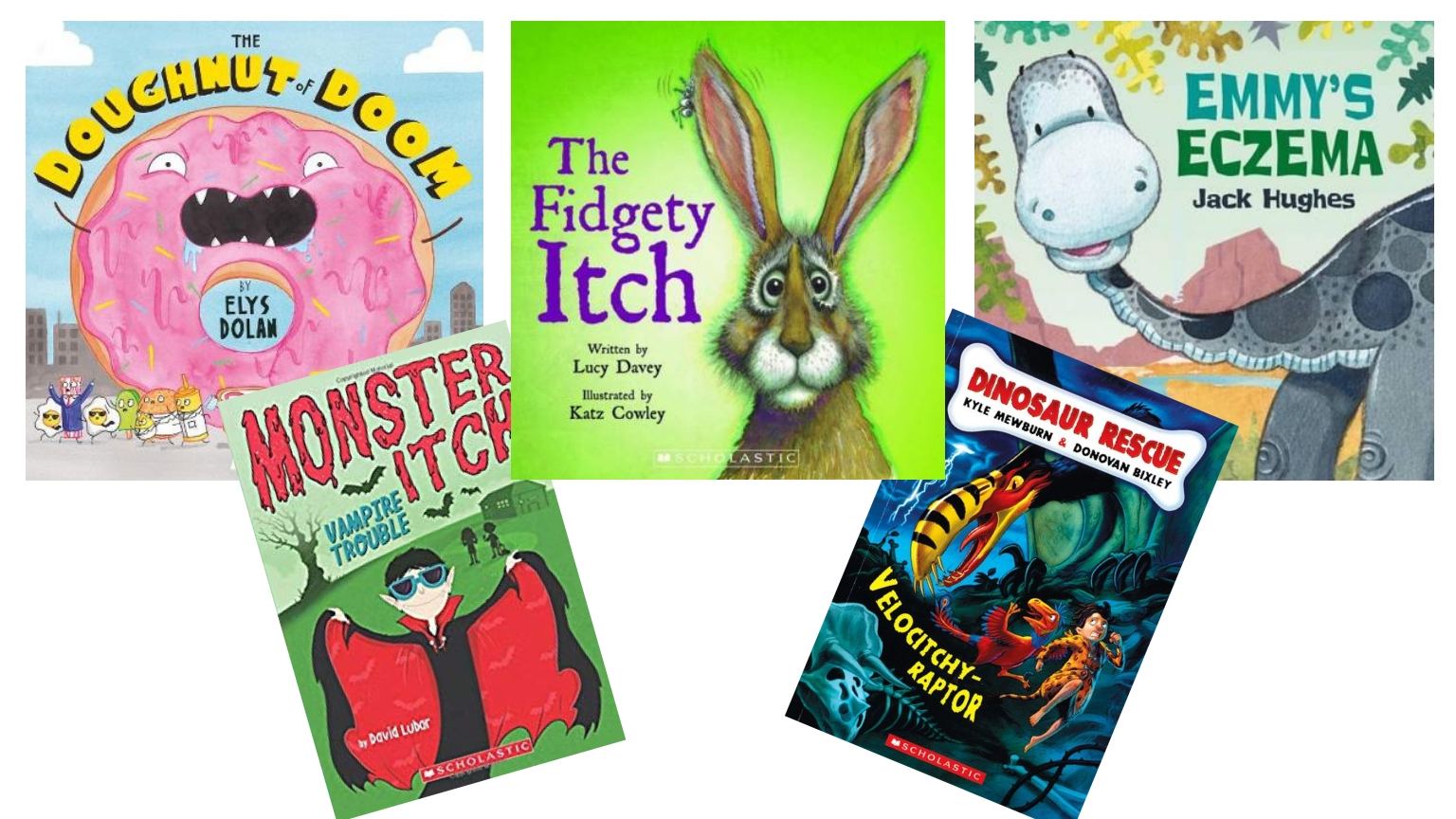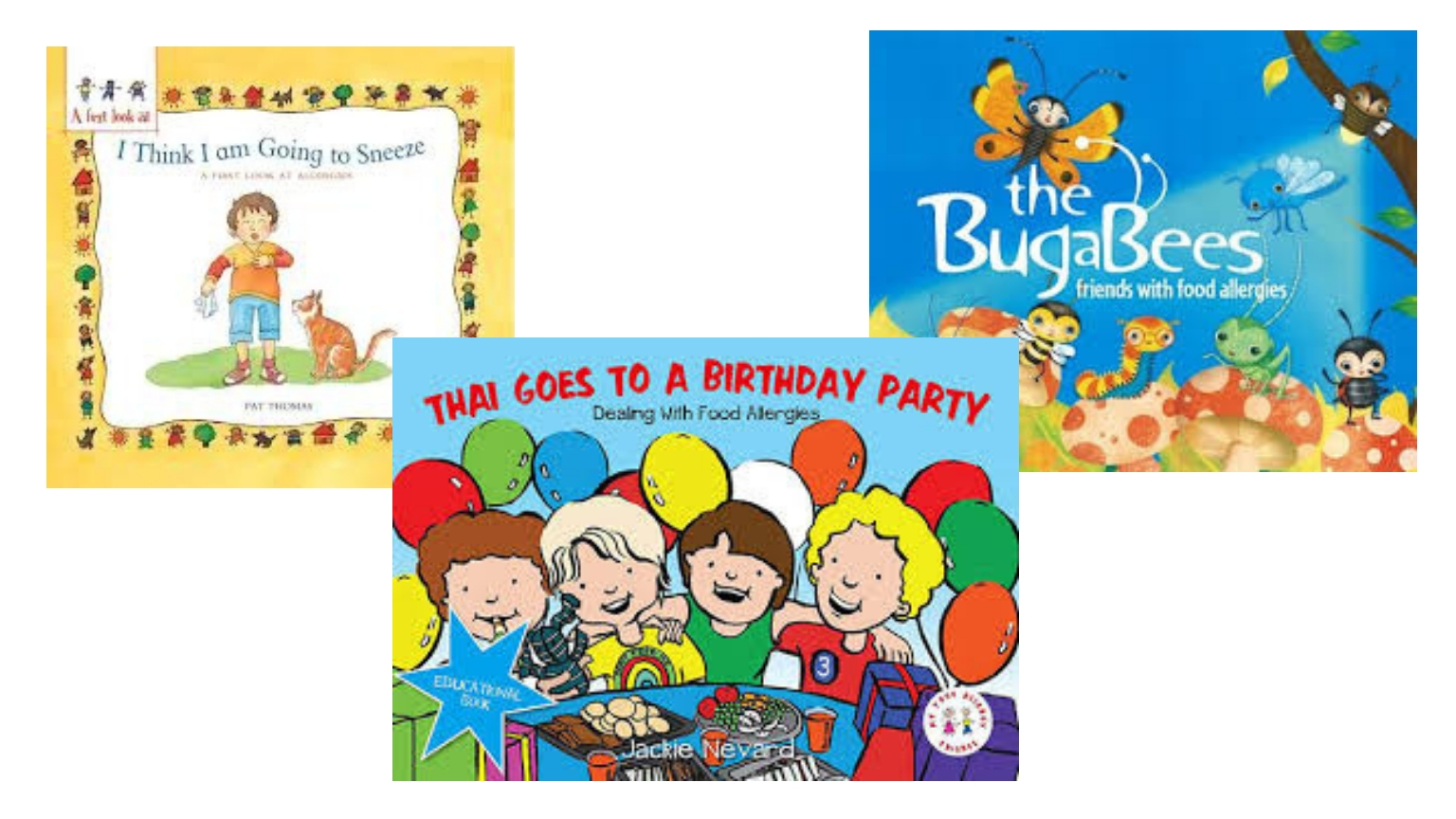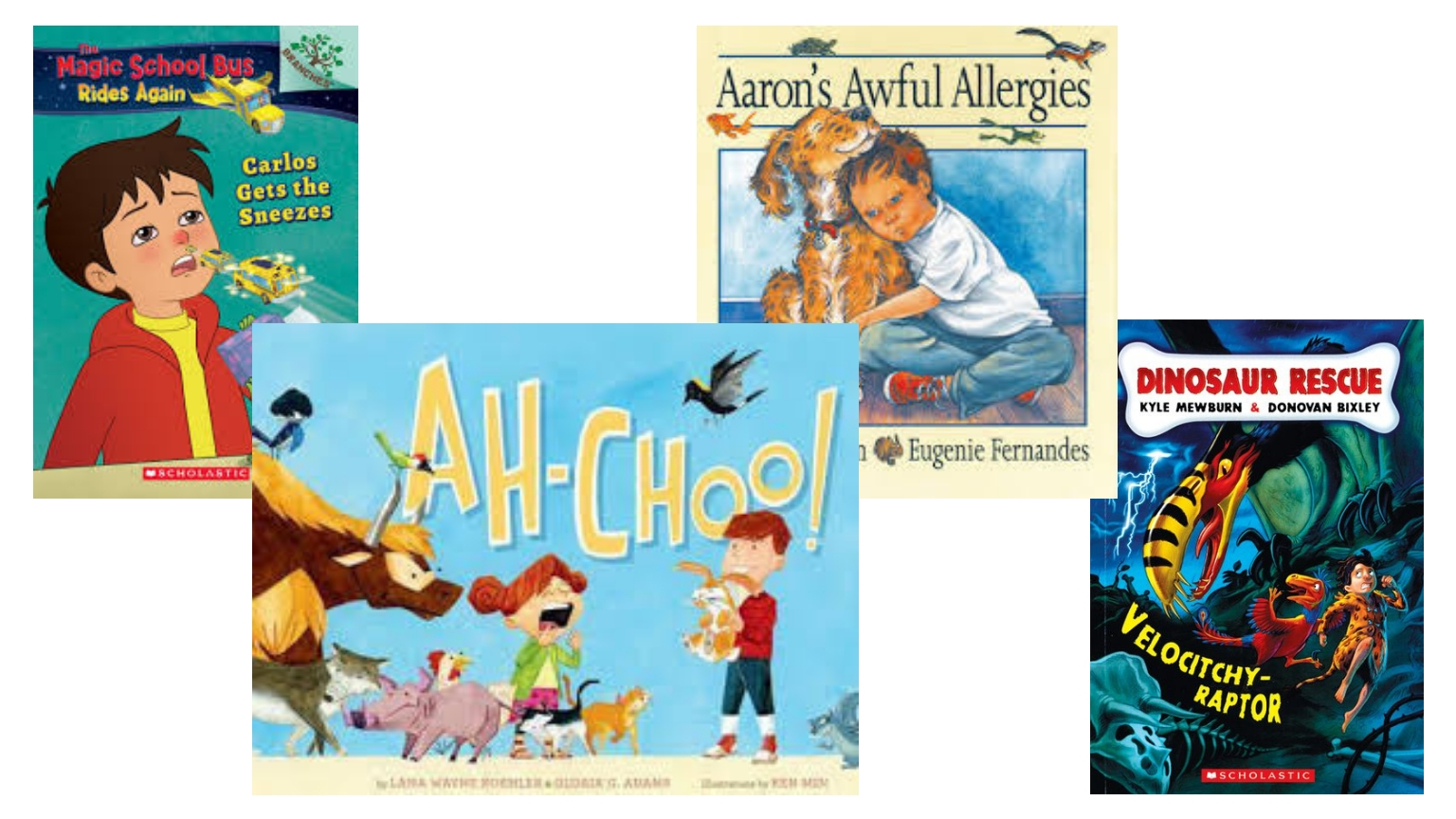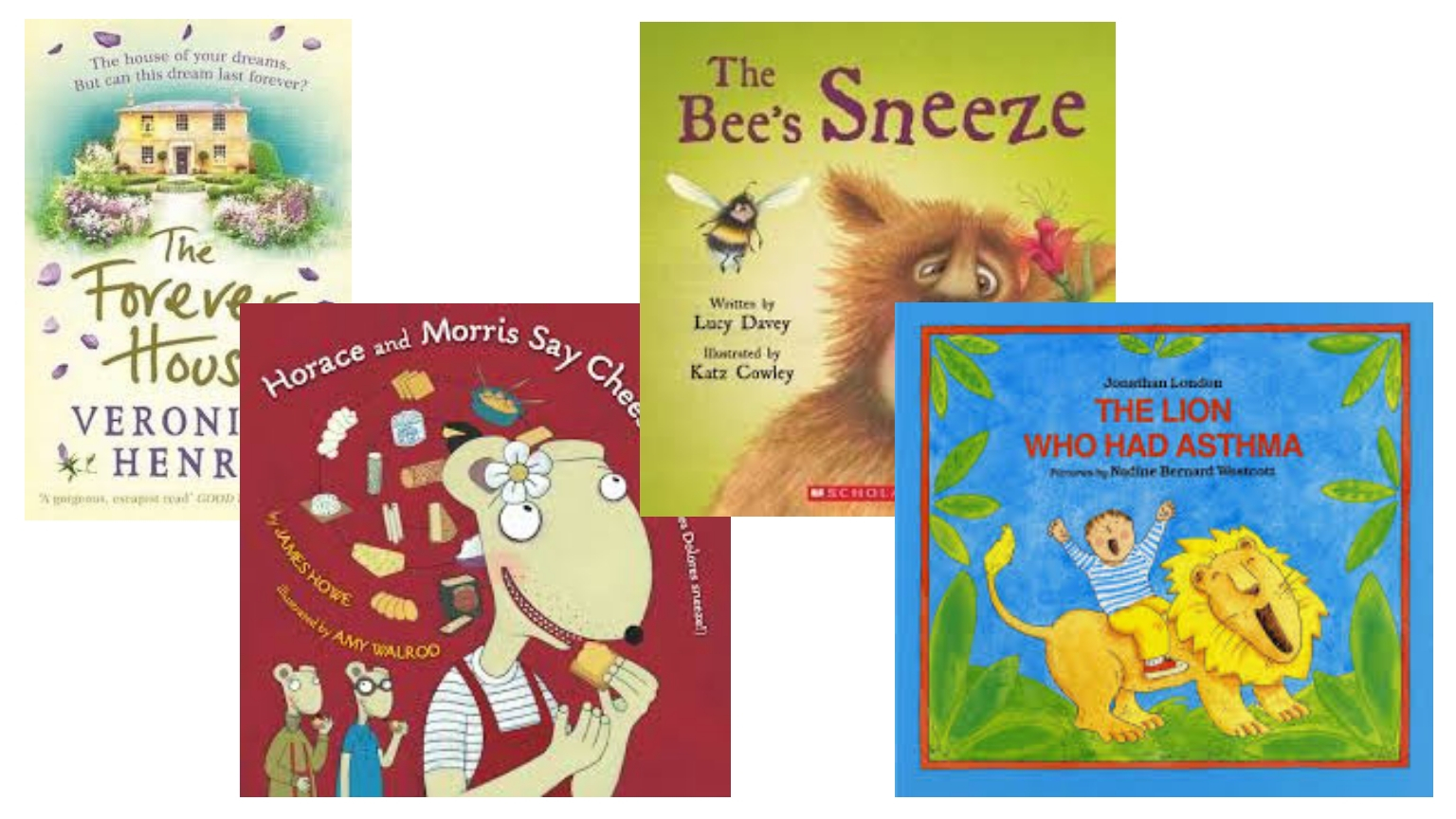Between six and eight percent of children in New Zealand live with allergies, according to Allergy New Zealand, with food allergies being the most common. We have asked Pearl Dsilva to put together a list of books that may help children understand their allergies better.
Allergies can be a challenging concept for children to fathom. It can be distressing that their bodies respond so violently to various allergens. Children with allergies may also be teased for their appearance and suffer lower self-esteem than their peers.
With more children being diagnosed with allergies by the day, it isn’t surprising that there is a surge in the number of books related to food allergies. Books can provide children the reassurance they need to help them understand themselves better and show them that there are others with similar or identical allergies to their own. Books can also make good educational resources for schools and early childhood education services, to help other children become more aware of creating a safe environment for their friends with allergies.
Many of books listed below contain discussion notes to help adults engage children to help them understand allergies better.
The funny picture books in this list will be particularly attractive to children. For instance, in The Doughnut of Doom by Elys Dolan, a peanut butter sandwich saves the day by inducing an allergic reaction in a doughnut with a tendency to eat anything in its way. The book also has some awesome puns which children will enjoy!
All in all, these books empower children to advocate for their own safety and help them see themselves beyond their allergies.

Books that introduce the concept of allergies
I think I am going to Sneeze: A first look at allergies by Pat Thomas is a picture book that tells children what to expect if they have allergies, such as different causes, how varied the symptoms may be, treatment specific to the allergy and mostly that regardless of the allergy, they can still live with them.
The BugaBees: friends with food allergies by Amy Recob introduces the most commonly known food allergens such as fish, shellfish, eggs, soy, wheat, milk, peanuts and tree nuts. Written in easy rhyme and with anthropomorphic characters, this is a great book to read aloud to very young children. At the end of the book, there are separate pages with discussion points dedicated to each of the allergens.
Jackie Nevard’s series of books based around her son, Thai could be used as an excellent educational medium to support children with allergies in different contexts. The books are beautifully illustrated and contain teaching points through the book. The protagonist, Thai, is always acknowledged through a credit-based lens, celebrating his strengths and dispositions first and then his allergies.
Thai Goes to a Birthday Party introduces Thai as an energetic two-year old who faces a situation typical of children with allergies at a birthday party. Should he eat the usual party food offered? Or look to Mummy for advice on what he can eat? Readers will realise that regardless of the ‘special’ food they are allowed to eat, they can still enjoy birthday parties for the companionship and fun. Thai’s Big Adventure in the City has a similar plot, but also focusses on stranger-danger.
In Thai’s Exciting First Week at School, readers see Thai take on the new challenge of school. Each page beautifully illustrates what he and his friends at school need to know in terms of managing his allergies, including the golden rule of not sharing food with others and symptoms typical of an allergic reaction. There are two other books in the series, titled Thai’s New Friend at Kindy and Thai’s First Ambulance Ride, the latter explaining anaphylaxis, its symptoms and the importance of immediate medical action to deal with it.

Books that discuss common allergens and symptoms characteristic of allergic reactions
In New Zealand, one of the common triggers for allergies is exposure to cats and other furry animals such as rats, dogs, or guinea pigs. This can be quite distressing for children who have these animals or pets or want one of them as pets. Aaron’s Awful Allergies by Troon Harrison deals with the heartache of having to let pets go due to being allergic to them and the notion that there could be pets beyond the furry ones!
In Ah-Choo! Lana Wayne Koehler & Gloria G Adams playfully deal with the frustration of having a sibling allergic to pets of all sizes and shapes, from A to Z save for one that doesn’t make one sneeze.
One of the early chapter books that children will find fascinating is Carlos Gets the Sneezes (part of the Magic School Bus series) by Judy Katschke which takes children through the character’s blood stream and explains how the immune system responds to allergens.
Older children (ages six to eight) might like reading David Lubar’s The Monster Itch duology where both Ghost Attack and Vampire Trouble involve a protagonist who is allergic … to monsters!

Similarly, Kyle Mewburn and Donovan Bixley’s Velocitchy-Raptor (Dinosaur Rescue series) has a protagonist who is on a mission to save a baby Velociraptor, only to find he is allergic to its feathers. Symptoms such as hives and sneezes, typical of an allergic reaction, are resplendent in these books and offer children a humorous outlet for the symptoms they may manifest. Similarly, The Forever House (from the Aussie Bites series) by Sofie Laguna and Lola Levine meets Jelly and Bean by Monica Brown deal with allergies to cats and thankfully, have happy endings; the former ending with the protagonist becoming immune to her coveted cat because she has spent so much time with it.
Children who are distressed to discover they are allergic to foods or things they love will enjoy Dolores, a mouse who is allergic to cheese! In Horace and Morris Say Cheese (which makes Dolores sneeze) by James Howe, Dolores discovers there is ‘more to life than cheese’ as she gets inventive with her lunches and shares her new culinary skills with her friends.
Lucy Davey’s The Bee’s Sneeze and The Fidgety Itch revolve around associated symptoms of allergies and although they do not specifically address allergies, are still good books to go to when you want to redirect children from scratching their scritches!

Books that discuss associated conditions
According to Allergy New Zealand, about 80 percent of asthma cases in young children could be related to allergens. Shelly Weiss’ Ella the Elephant: Educating Children about Asthma and Jonathan London’s The Lion who had Asthma, creatively chronicle typical symptoms of an asthmatic attack and the treatment that is needed to restore normal breathing (an inhaler in the former and a nebulizer in the latter), with a focus on relaxation.
Starship Hospital estimates 15 to 20 percent of children in New Zealand have eczema, with symptoms such as severe itchiness and atypical skin appearance. These children are also more prone to developing allergies. This has been beautifully explained from a child’s perspective in Jack Hughes’ Emmy’s Eczema and in Rosie Wellesley’s The Itchy-saurus. Both books have dinosaurs as protagonists and could work wonderfully for a child suffering from eczema or itchy skin.

Pearl Dsilva
Pearl D’Silva is an author and children’s literature enthusiast. She is an Early Childhood Education lecturer. She lives in Auckland with her husband, a daughter and son. She can be usually found at the topmost rung of the Ladder on The Faraway Tree, anticipating The Next Land of Adventure!



